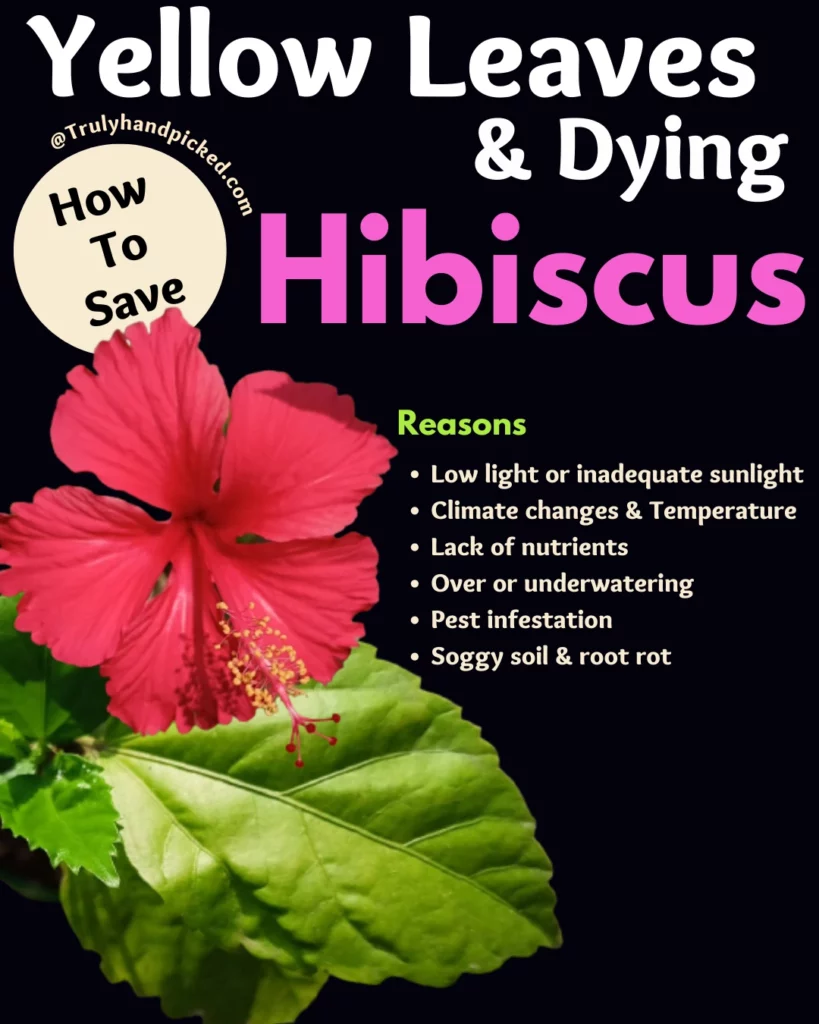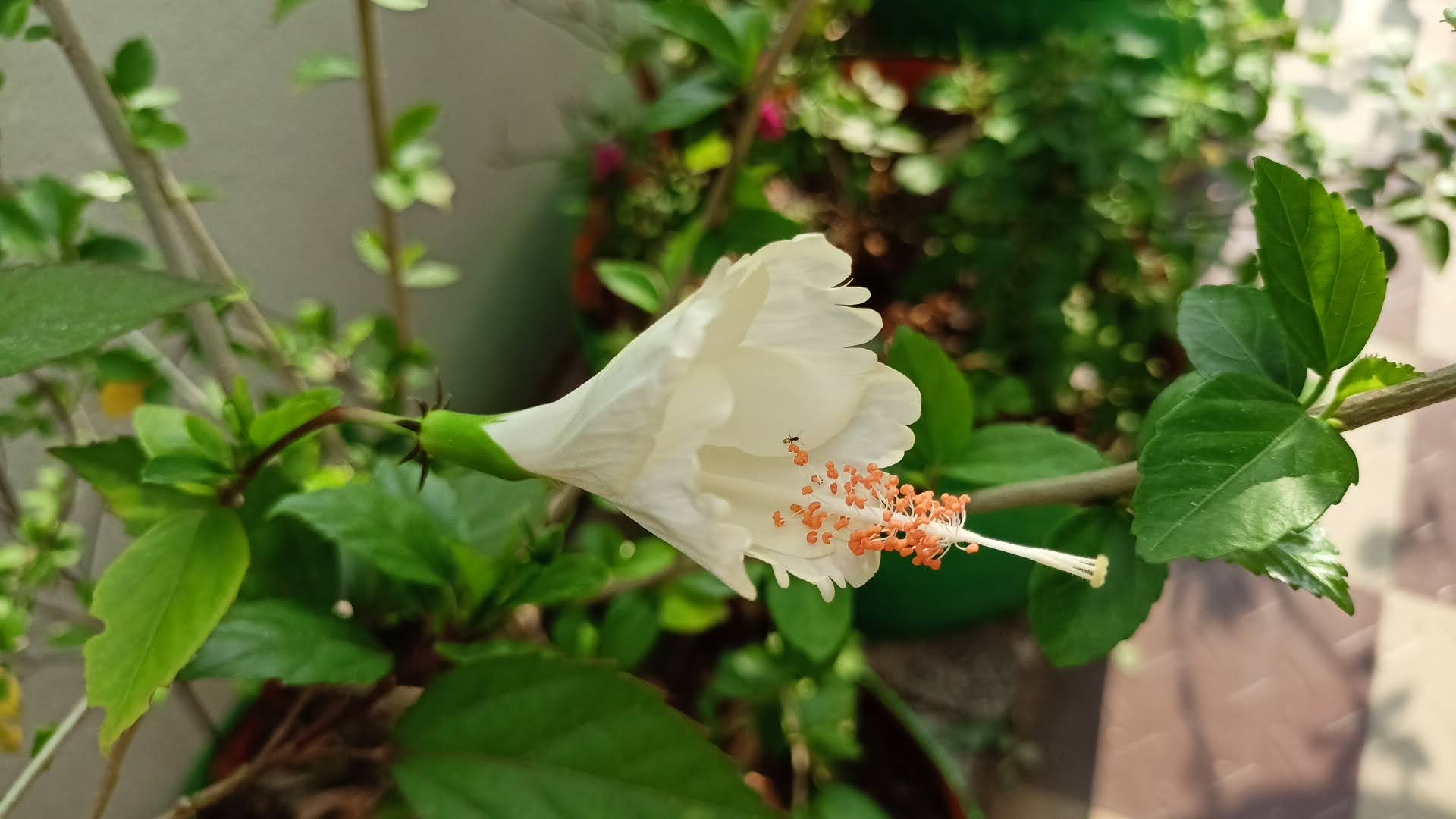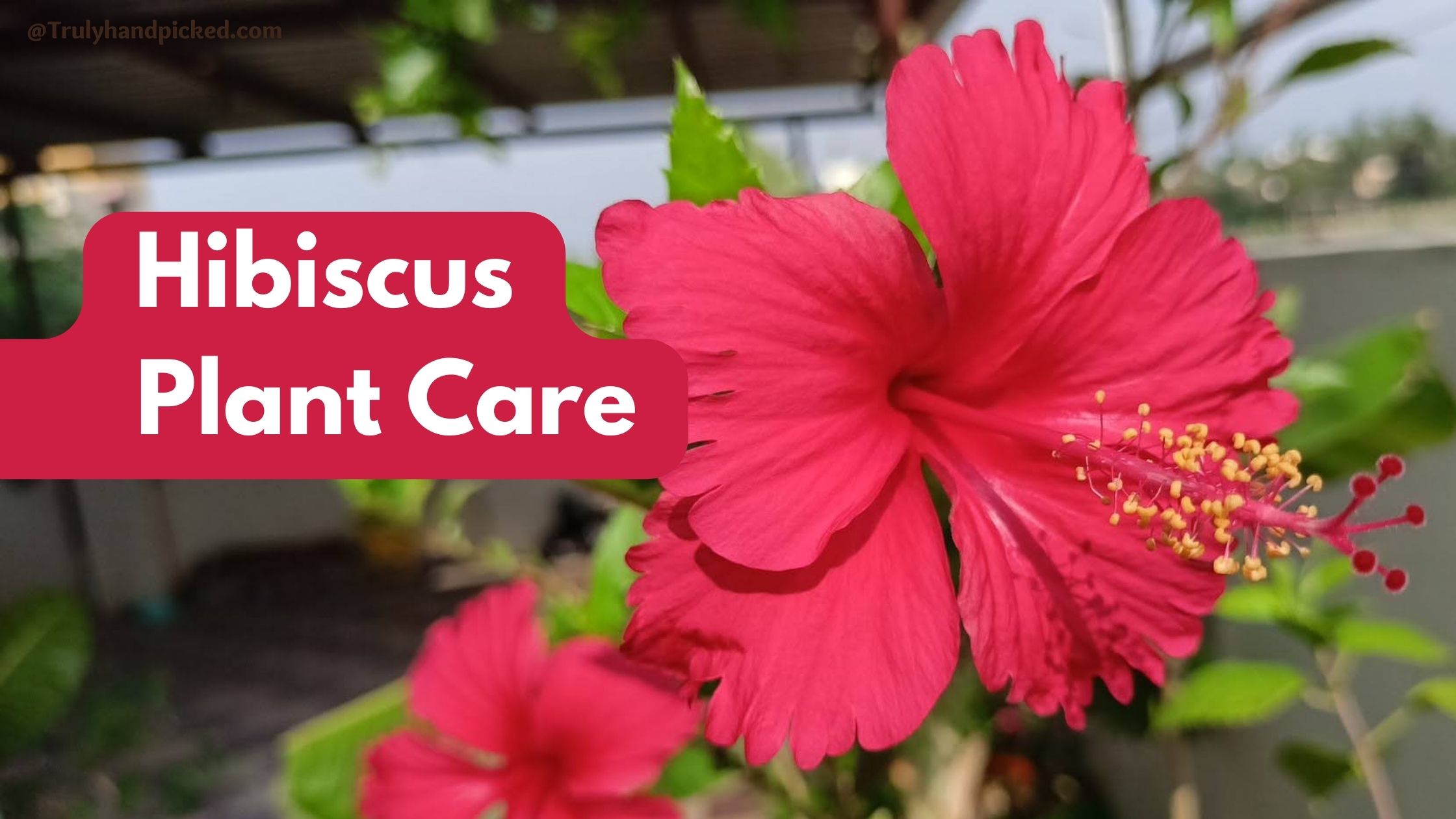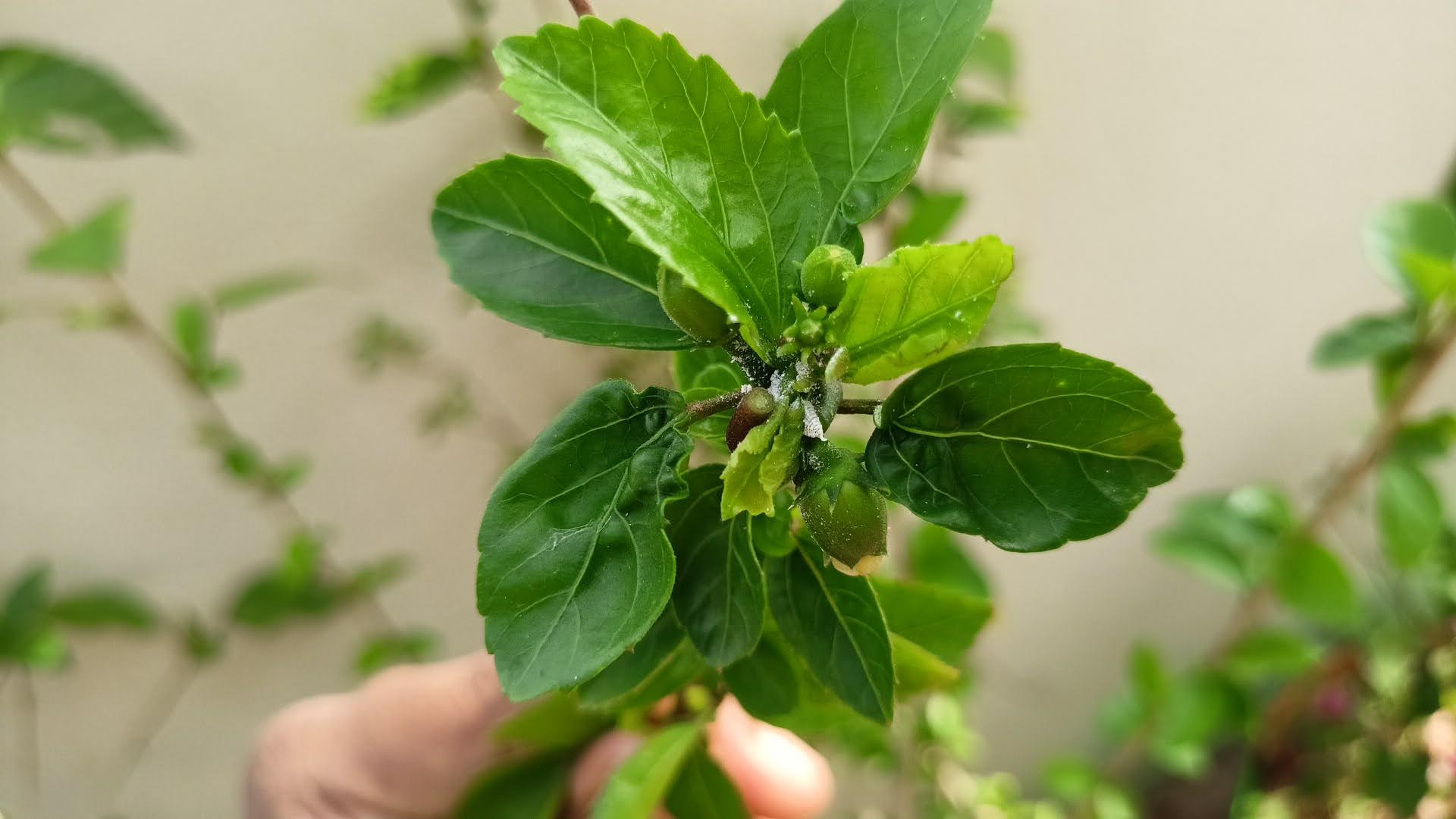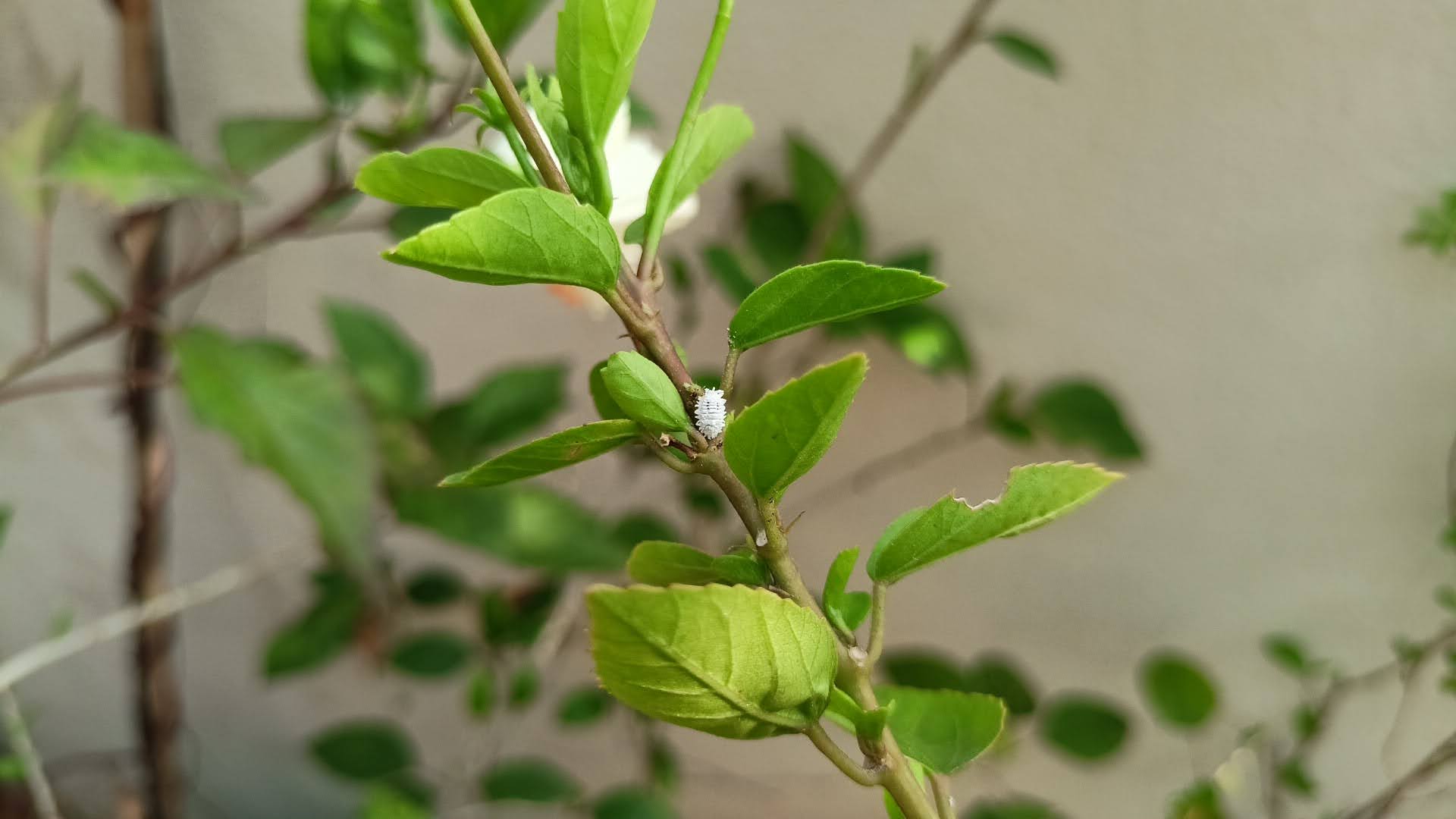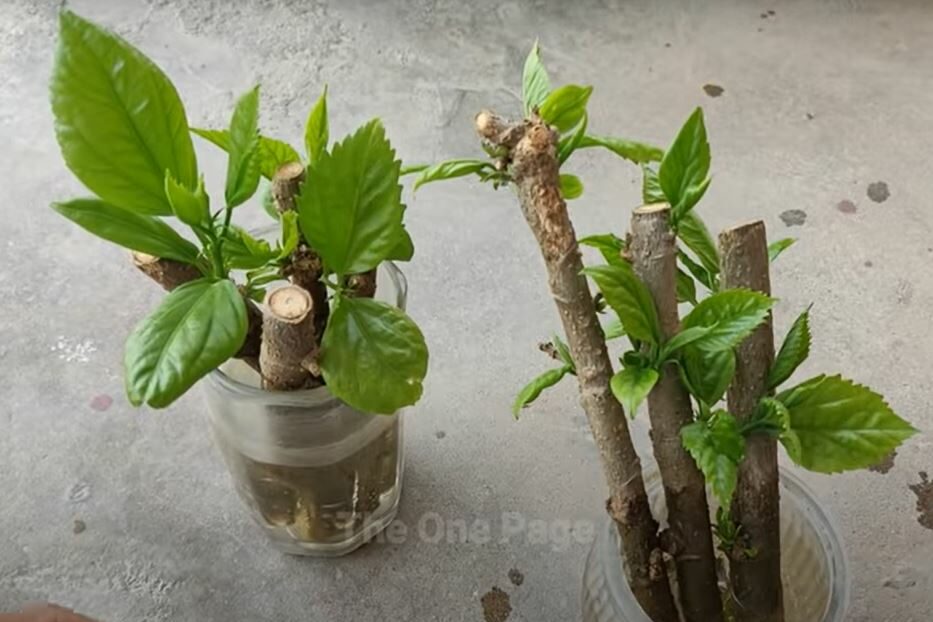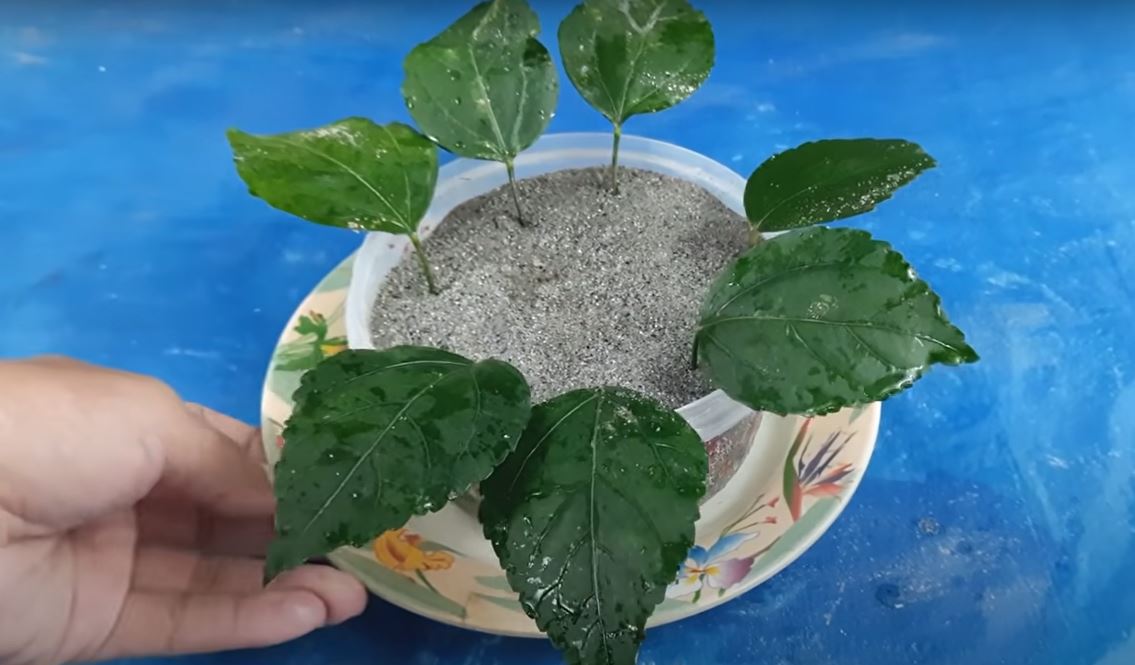What’s inside: Reasons why hibiscus leaves are turning yellow, how to deal with yellowing leaves, quick care tips, revive a dying hibiscus, propagation, and why to deadhead flowers.
Hibiscus is a stunning flowering plant from the mallow family of the Malvaceae genus. The main genus is quite hefty and incorporates almost hundreds of species.
Hibiscus plants are native to the warmer tropical climate but easily adaptable to normal home temperatures. Thus, you can grow a healthy hibiscus plant easily in any corner of your house, whether it is in an indoor garden or an outdoor yard.
Here are some interesting facts you must know about this Indo-Asian flowering plant to grow it more expertly at your place-
Why Hibiscus Leaves Are Turning Yellow
Vibrant flowers of a healthy hibiscus plant look even more attractive while blooming around deep green foliage. green leaves are also a sign of the healthiness of your growing hibiscus plant.
So, once you find that the leaves of your hibiscus plant are turning yellow, you must give the plant more attention until you find its true cause and solve them accordingly.
Common Causes of Yellow Leaves:
Some typical reasons for this yellow-leaf issue are-
- Low light or inadequate sunlight through indirect sun or sun with partial to full shade
- Fluctuation in temperature with frequent temperature changes
- Lack of nutrients with irregular fertilization
- Watering issues due to overwatering or underwatering
- And untreated insects infestation
Related: Why my hibiscus is not flowering
How to Fix Yellow Leaves in Hibisus
Fortunately, you can revive your plant and stop those yellow leaves with some smart and effective tips
- Give your growing hibiscus plant direct sunlight through full sun exposure
- Water it regularly and use only the growing medium that drains excellently
- Use a planter that has good drainage holes for the potted hibiscus plants
- Fertilize your plant once a month, especially during the growing season, and don’t forget to amend it once every few whiles
- Protect your plant from the harshness of environments like too-cold frost or unbearable heat waves, etc.
- And give your plant proper remedy methods for any pest or insect infestation, before it turns lethal for your hibiscus plant.
Related: How to save African violet turning yellow
How to Revive a Dying Hibiscus Plant?
Hibiscus is a hardy plant and thus, can thrive consistently under plenty of intricate conditions. However, keeping your plant inattentive for long and away from proper care may lead to an unfortunate outcome like dying.
However, you can save some of them, if you apply the recovering method in time. To do so, you must find the reasons for a dying hibiscus plant and resolve it from its root.
Here are some useful tips you must consider in this attempt-
Common Reasons for Dying:
- If you keep your plant in a low-humid place for long
- When you couldn’t provide your plant with enough sunlight for long
- If your plant face transitioning condition due to seasonal changes
- When you keep your plant unprotected under the harshness of a cold blast or heatwave
- If you keep the soil drought due to irregular fertilization for long
- When you never water your plant in time or water it unnecessarily
- If your plant is getting root decay due to water-logged issues due to improper drainage
- When you use a high-phosphorous fertilizer for your hibiscus plant
- If you keep the plant at a low temperature that is below 50° F for long
- When you use saturated soil for the plantation that interrupts the uptake of nutrients and moisture to the roots
Related: How to save a dying basil plant
Tips to Recover:
- Keep the soil evenly moist by often misting, apart from watering
- Place the planter away from open window drafts
- Make sure the planting soil is consistently moist and properly drained at the same time
- Keep your hibiscus plant in a partially shady area if it’s a scorching summer
- Bring an artificial humidifier to maintain the humidity level high
- Look for any insect infestation and treat it as soon as probable
- And keep the basic caring methods and schedule watering, fertilizing, pruning, and repotting courses properly in time.
How To Care for Hibiscus Plant:
- Soil: This plant prefers loamy and sandy soil with well-drain quality. Make the soil rich enough with organic matter and keep the pH level slightly acidic for the best result.
- How often to water: Hibiscus plants are quite thirsty. Try to water it daily with normal tap water, especially during scorching summer days. Reduce the watering 2-3 times a week in other seasons and always use lukewarm water for the best result.
- Fertilizer: Try to feed your plant once a month or once every 2 months with any granulated fertilizer. Keep the ratio of NKP 3-1-4 to boost the blooming quality in your plant more rapidly.
- Sun Exposure: Hibiscus plants always thrive best while put outdoors due to their sunlight requirements. Remember that more sun exposures mean more flowers. Provide your plant with 8-9 hours of direct sunlight under full sun exposure.
- Climate: Due to being a warmer-climate plant, hibiscus always wants a whole-hearted temperature. Keep the growing temperature between 60° to 85° F with a highly humid atmosphere.
- Pruning: Do the pruning session in spring and try to remove almost 1/3 parts of the stem from a bushier hibiscus plant to promote the growth more excitingly. Trim out any discolored or unhealthy leaves along with leggy stems during this process.
Repotting and Pruning
- Repotting: You need to replant your hibiscus plant once every 1-1.5 years to keep the roots healthy. Try to avoid using clay pots during this time, as clay pots may increase the alkaline level in the soil unknowingly. Mulch your plant every time you repot them to hold the water for a longer period.
- Pests and Bugs: Due to being a vibrant flowering plant, hibiscus often attract many pests and bugs to their blossoms as well as green foliage. Aphids, ants, coast flies, thrips, hibiscus mites, etc. are some common nuisances you may face. Try to apply organic remedies like glycerin, neem-infused coconut oil, soap spray, peppermint oil, etc. are some useful items in this regard.
Mealybugs infestation on hibiscus plants: Use neem oil and soap spray or use a forced stream of water to wash the mealybugs off the plant. As pests suck the nutrients make the plant look lifeless which also results in reduced leaf and flower size. Learn more about quick ways to get rid of mealybugs.
Benefits: What is Special About Hibiscus Plant?
The Hibiscus plant is not just another common flowering plant with beautiful blossoms. It has many valuable significances, which make hibiscus a must-have plant for many gardeners. Some of these important facts are as follows-
- Unlike many common flowering plants, hibiscus contains anthocyanins properties
- This agent helps hibiscus grow with such an eye-catchy vibrant red shade
- Petals of hibiscus plants contain some supremely beneficial antioxidant properties
- Phenolic acid, organic acid, flavonoid acid, etc. are some other advantageous compounds you can find in this flowering plant
- And flowers of the hibiscus plant hold some spiritual significance in Indian and some Asian territories.
How Long Hibiscus Plants Could Live?
Hibiscus plants are a long-lived species and thus stay for a longer while comparing normal flowering plants. A potted hibiscus plant could live up to 10 years in a wider planter and with proper care.
Garden hibiscus plants could even live longer than potted ones. Hybrid species of hibiscus can live around 10-11 years though. But the traditional varieties can live almost 50 and more through moderate care and some fundamental growing essentials.
Related Quick Reads:
Is The Hibiscus Plant Poisonous/Toxic?
Most hibiscus species are not at all poisonous and are safe for house pets as well as babies. Only the genus of Rose of Sharon or Hibiscus syriacus is a bit toxic to your house pet. The toxic elements of this plant can initiate some mild poisonous issues in your furry friend. Such as-
- Vomiting
- Drooling
- Nausea
- Or diarrhea
This only happens when your pet ingests a larger amount of hibiscus plant at once. If we talk about humans, the hibiscus plant and its flowers hold health benefits rather than being poisonous.
Ref: The one-page youtube
How to Propagate Hibiscus Plant?
The propagation of a hibiscus plant is smoother than you could ever imagine. Let’s learn this process in step by step method-
Supplies You Need:
- A disinfected shear or pruner
- A container of rooting hormone
- A glass of distilled water
- A 6-8 inch long planter
- Growing medium prepared with peat moss and sand in 1:3 ratio
- A plastic bag
- And a sprayer
How to:
- Find a smooth and newly grown stem with some green leaves on your parent’s plant
- Cut the stem about 4-6 inches long and remove the below-leaves entirely
- Make sure you cut the stem on the area where a leaf was growing from
- Dip the end in a rooting hormone and place the cutting in a glass of distilled water
- Let the end steep in the water for a couple of weeks until new shoots come out
- You can even sow the cutting directly in the potting soil if you want, by skipping this water-submerging process
- Water the soil with a sprayer carefully then, to make it evenly moist
- Now cover the planter in a plastic bag and place it in a warm spot in the house
- A plastic cover is essential for both methods, whether it is water or soil propagation
- New shoots will come after 4-6 weeks, then you can replant them in your garden or a wider plater to let the hibiscus plant thrive more vigorously.
Additional Method: Propagate Hibiscus From Leaves
Ref: Dian Garden Tips – Hibiscus Plant Propagation From Leaves
Words from a fellow gardener about why she deadheads hibiscus flowers.
Why Deadhead Hibiscus Flowers?
- Encourage continuous blooming: By removing spent or faded flowers, I’m sending a signal to the plant to produce new blooms. This practice redirects the plant’s energy into creating fresh buds, resulting in a prolonged blooming period throughout the season.
- Maintain a neat appearance: Keeping the plant tidy and visually appealing is important to me. By eliminating wilted or discolored blooms, I ensure that the hibiscus remains clean and well-groomed. It enhances the overall beauty of the plant and contributes to an attractive garden.
- To prevent seed formation: Hibiscus plants have the potential to produce seed pods after the flowers fade. By deadheading, I prevent seed formation and encourage the plant to focus on new flower development instead. This approach maximizes the plant’s blooming potential and prevents the garden from becoming overwhelmed with seeds.
- Promote plant health: By getting rid of spent flowers, I reduce the chances of disease or pest infestations. Withered flowers can attract pests and become vulnerable to fungal diseases. Deadheading minimizes these risks and contributes to better overall plant health.
When deadheading the hibiscus, I make sure to cut the stem just above a healthy set of leaves or leaf nodes. This technique encourages new growth from that point and helps maintain the plant’s shape and structure.
Just for Fun: Words From My Daughter on Why Hibiscus Leaves are Turning Yellow
You see, hibiscus plants are super cool with their big, colorful flowers. But sometimes, their leaves can turn yellow, and that’s not so cool. There are a few reasons why this happens, and I’m going to tell you all about them!
First, hibiscus plants really, really like sunlight. They need lots of it to stay healthy and happy. If they don’t get enough light, their leaves can turn yellow. So, it’s like they’re saying, “Hey, I need more sunshine, please!”
Next, hibiscus plants get thirsty too! Just like we need water to drink, they need water to survive. If they don’t get enough water, their leaves can turn yellow. It’s like they’re saying, “Hey, give me a drink, I’m thirsty!”
Now, let’s talk about food for the hibiscus. They need special nutrients from the soil to grow well. Sometimes, if they don’t get enough of these nutrients, their leaves can turn yellow. It’s like they’re saying, “Hey, I’m hungry! Feed me some yummy plant food!”
Oh, and here’s another thing to watch out for – pesky little bugs! Sometimes, bugs like to munch on hibiscus leaves, and that can make them turn yellow too. It’s like the bugs are having a big feast, and the hibiscus is like, “Hey, leave my leaves alone!”
But don’t worry! If you see yellow leaves on a hibiscus plant, there are things you can do to help. Give it more sunlight, water it regularly, and make sure it gets the right plant food. And if you see any bugs, you can try to get rid of them gently.
So, remember, hibiscus plants are awesome, but sometimes their leaves can turn yellow. Just give them the love and care they need, and they’ll bounce back with beautiful green leaves and colorful flowers again!








